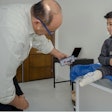More in Home
Is imaging always needed for recurring shoulder dislocations?
December 17, 2025
Take charge of work patterns and look after each other
December 16, 2025
12 key points to remember for AI deployment
December 15, 2025
Patients support AI in radiology, but not as standalone reader
December 15, 2025
Marathon training seems to have no negative impact on heart
December 15, 2025
MRI casts light on patient outcome after heart attack
December 12, 2025
3D-printed prostheses bring hope in conflict zones
December 11, 2025
MRI proves effective for tracking results of obesity interventions
December 10, 2025
Lung cancer screening: How Croatia does it
December 10, 2025
AI comes under scrutiny in Swedish prostate MRI study
December 9, 2025
Molecular imaging can trigger 'next revolution' in radiology
December 8, 2025
Challenging inequity: ESR group spells out why it matters
December 8, 2025
Page 1 of 66
Next Page




















